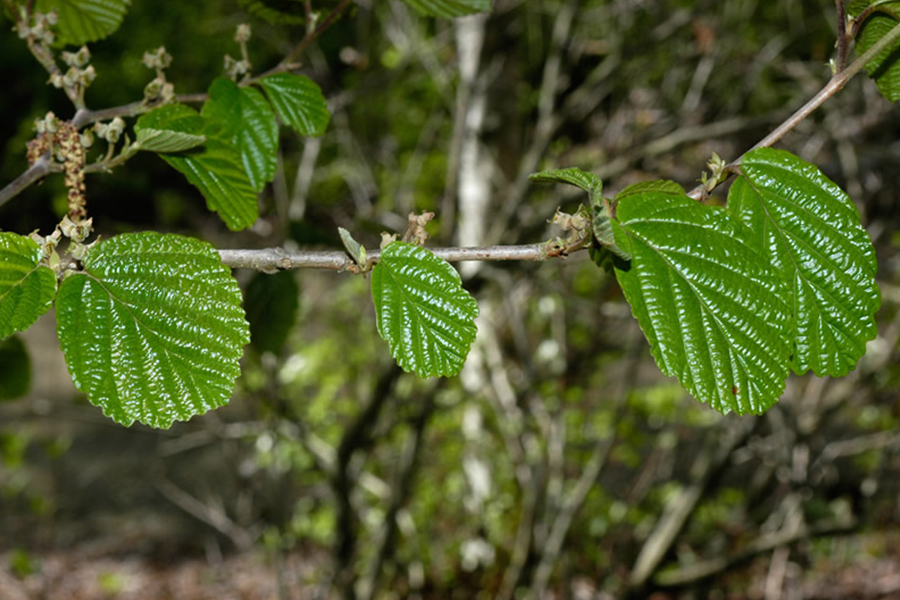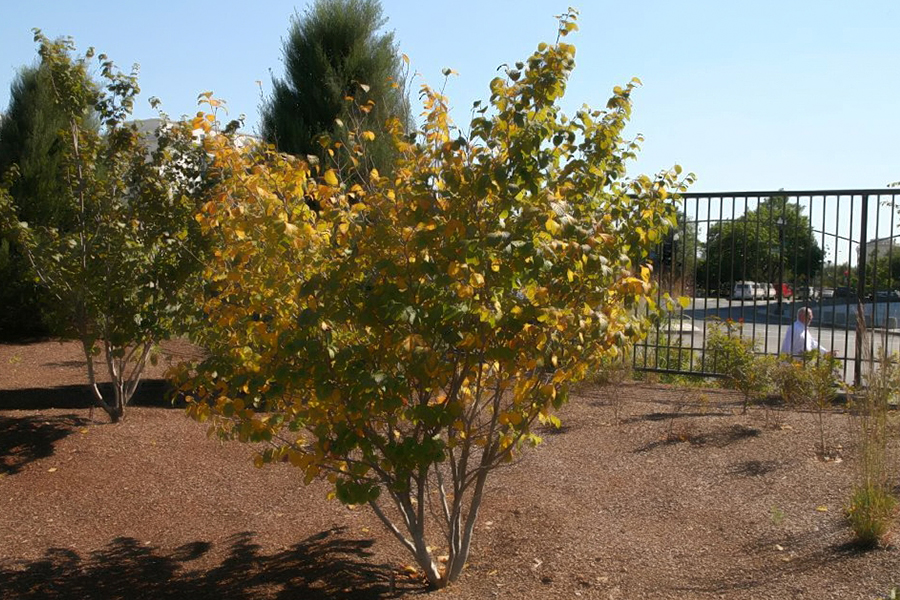Hamamelis virginiana
Witch hazel is a shrub native to eastern North America. Its astringent properties have long been used to treat ailments such as inflammation in skin care products.
Location
Nowadays, witch hazel can be found nestled along Larch Lane. Close to the entrance to the Stone Wall Trail, you can find the remains of an old Orchard Hadwen himself used to maintain. The witch hazel can be found in this area.


History at Hadwen
Witch hazel was present on Hadwen’s estate at least as early as 1882, although it is unclear if they were planted by Hadwen himself or germinated naturally.
Keep Learning
Detailed Species Information
Witch Hazel is a small deciduous shrub in the family Hamamelidaceae native to eastern North America. It can grow up to 20 feet (6 meters) in height often with a multi-stem form. The bark of the witch hazel can be varying shades of brown and smooth in texture. The green leaves are alternately arranged on the stem and are typically oval or egg-shaped with scalloped edges. Witch hazel blooms in fall with flowers that range in color from yellow to orange-red while the leaves turn from light greens to yellow. Witch hazel grows in a variety of habitats but prefers moist soils near stream banks and forest edges. The witch hazel is also an important plant for pollinators and supports dozens of species of caterpillars.
Witch hazel is widely used in landscaping due to its vibrant fall foliage and versatility in terms of environmental conditions. The plant is also known for its medicinal properties and has been used for centuries by Native Americans for various ailments such as inflammation. The astringent extract of witch hazel is used in a variety of products including skin care products.
